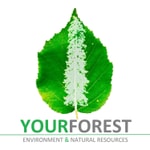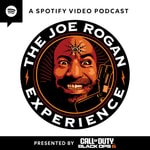YourForest – Détails, épisodes et analyse
Détails du podcast
Informations techniques et générales issues du flux RSS du podcast.

YourForest
Matthew Kristoff
Fréquence : 1 épisode/18j. Total Éps: 163

This podcast exists to challenge our ideas of sustainability. Why do we do the things that we do? And how can we make sure that what we are doing is right? This show is an exercise in developing new perspective and context around land management in order to help us make the best decisions possible.
Classements récents
Dernières positions dans les classements Apple Podcasts et Spotify.
Apple Podcasts
🇺🇸 États-Unis - naturalSciences
29/07/2025#81🇺🇸 États-Unis - naturalSciences
28/07/2025#88🇨🇦 Canada - naturalSciences
27/07/2025#93🇺🇸 États-Unis - naturalSciences
27/07/2025#63🇨🇦 Canada - naturalSciences
26/07/2025#77🇺🇸 États-Unis - naturalSciences
26/07/2025#78🇨🇦 Canada - naturalSciences
25/07/2025#69🇨🇦 Canada - naturalSciences
24/07/2025#55🇨🇦 Canada - naturalSciences
23/07/2025#40🇨🇦 Canada - naturalSciences
21/07/2025#98
Spotify
Aucun classement récent disponible
Liens partagés entre épisodes et podcasts
Liens présents dans les descriptions d'épisodes et autres podcasts les utilisant également.
See all- https://goatalliance.org/
349 partages
- https://drgabormate.com/
241 partages
- https://www.westfraser.com/
99 partages
- https://www.facebook.com/yourforestpodcast
22 partages
- https://www.facebook.com/yourforestpodcast/
18 partages
Qualité et score du flux RSS
Évaluation technique de la qualité et de la structure du flux RSS.
See allScore global : 49%
Historique des publications
Répartition mensuelle des publications d'épisodes au fil des années.
152 - Why Insects Matter–Forest Health | Insights From Caroline Whitehouse
Épisode 152
mercredi 21 août 2024 • Durée
In this episode of the YourForest podcast, host Matthew Kristoff sits down with Caroline Whitehouse, a forest health specialist with the Government of Alberta. They dive into the world of forest pests, focusing on the ecological importance of insects and how they contribute to forest resilience. Caroline shares her unique journey into entomology, emphasizing the need to appreciate insects not just as pests but as vital components of our ecosystems.
Caroline Whitehouse is a forest health specialist with the Government of Alberta, where she monitors and manages forest health, particularly in relation to insect populations. She is also completing her Ph.D., focusing on the role of insects in forest ecosystems. Caroline’s work highlights the importance of understanding and managing forest pests within the broader context of ecological health and resilience.
Matthew and Caroline explore the complex world of forest pests, discussing how insects like the mountain pine beetle play crucial roles in forest ecosystems. They talk about the challenges of managing these pests, the impact of climate change, and the importance of creating resilient landscapes. Caroline explains how disturbances, whether caused by insects or fire, are necessary for maintaining healthy forests. She also touches on the need for better monitoring and research to understand the full scope of insect biodiversity and conservation.
Key Takeaways:
Resilient Landscapes: Building resilient landscapes that can recover from disturbances is essential. This means promoting diversity in tree species, ages, and forest structures.
Insect Appreciation: Insects are fundamental to ecosystem processes. Rather than viewing them solely as pests, it’s important to understand their roles in nutrient cycling, pollination, and as food sources for other wildlife.
Monitoring and Research: There is a critical need for expanded monitoring and research on insect populations, particularly in the face of climate change. Understanding insect biodiversity is crucial for effective forest management.
Invasive Species: Urban forests are particularly vulnerable to invasive pests like the emerald ash borer. The spread of such species poses significant challenges for forest health and requires proactive management strategies.
To learn more about Caroline Whitehouse and her work, stay tuned for future episodes and follow the links provided below. Additionally, if you’re inspired by this episode, consider supporting your local ecosystems by planting a diverse range of native species in your yard and avoiding the use of harmful pesticides.
Follow Guest:
Entomological Society of Alberta
Sponsors
Quotes
46:25 - 46:53: “Insects are only pests as defined by us. Sure. They're just out there doing their thing right and living their lives and their populations fluctuate. And it's when it's something that becomes intolerable esthetically unpleasing to us or, you know, is potentially going to damage forest resources on a large scale, then that's a pest to us. It's kind of different in forestry, because in agriculture it's easy to define these. So we have a we have a process that's called integrated pest management.”
48:19 - 48:29: “When you remove a disturbance, that ecosystem becomes increasingly susceptible to exaggerated disturbances.”
Takeaways
Importance of Landscape Resilience (00:00:45)
Caroline emphasized that creating resilient landscapes is crucial to ensuring that ecosystems can undergo disturbances and recover their functions. She believes the focus should be on maintaining ecosystem processes rather than the physical appearance of forests.
Caroline’s Journey into Entomology (00:05:11)
Caroline shared her journey of becoming fascinated with insects, particularly during her university years when she took an entomology course. This experience opened her eyes to the diversity and complexity of insects, leading her to pursue a career in forest entomology.
The Role of Insects in Ecosystems (00:09:39)
Caroline discussed the fundamental role insects play in every ecosystem, from decomposition to pollination. She stressed that without insects, ecosystems would collapse, affecting all forms of life, including humans.
Pollinators: Beyond Just Bees (00:12:41)
Caroline discussed the role of various pollinators, not just honeybees, in ecosystems. She pointed out that native bees and other insects are critical to pollination and that honeybees are often misunderstood as the primary or only pollinators.
The Misunderstanding of Honeybees (00:14:09)
Caroline highlighted the common misconception that honeybees are native and the only important pollinators. She explained that honeybees are actually domesticated livestock and that their proliferation can negatively impact native bee species.
The Threats Facing Native Pollinators (00:18:17)
Caroline elaborated on the challenges facing native pollinators, particularly the impact of habitat loss, disease, and competition from non-native species like honeybees. She emphasized the need for conservation efforts focused on native species.
Citizen Science and Insect Monitoring (00:30:59)
Caroline spoke about the potential for citizen science in insect monitoring, acknowledging the challenges in identifying insects but also the value in public involvement and awareness in conservation efforts.
Disturbance: A Key to Boreal Forest Health (00:48:00)
Caroline highlighted that natural disturbances, including those caused by insects, are crucial for the boreal forest's renewal and succession. Removing these disturbances makes the ecosystem more vulnerable to larger, more damaging events.
Insect Conservation as an Ecological Imperative (01:18:26)
Caroline argued that insect conservation is vital for maintaining ecological balance. She mentioned that insects have an intrinsic value and are crucial for the survival of many other species, making their conservation an ecological imperative.
If you liked this podcast, please check out our YouTube channel, also please rate and review it, share it on Instagram and Twitter tag a friend, and send your feedback and comments to yourforestpodcast@gmail.com.
151-Local Sustainability with Basil Camu
Épisode 151
mercredi 17 juillet 2024 • Durée
Do you want to support healthy ecosystems, and create a legacy that can last? Me too. Start with your lawn, then your community, then see how you feel. Basil Camu is an expert in local rewilding and today he is here to share his passion for natural ecosystems and how you can create a bounding oasis of local biodiversity literally in your back yard! Think native! Flowers, grasses, forbs, shrubs, trees, everything helps!
I often get so wound up in forests and how we manage them that I forget that my yard, and community, can be a place for nature as well. I am now officially growing trees in my back yard with the intention of rewilding my property, and hopefully sharing that passion with others.
Resources
Sponsors
Quotes
12.35 - 12.43: “I think humans are a part of this planet, we are all interconnected. There has been a huge disconnect between humans and the rest of life.”
Takeaways
“I love trees” (09.13)
Basil’s love for ecosystems is reflected in his book, From Wasteland to Wonder. He believes that humans are a part of the planet and should not be separated from nature.
Soil = life + sand + silt + clay (20.45)
Basil explains how plants have been converting the sun’s energy into usable formats for millions of years, causing life to move from the oceans onto land and support all life above ground and under the soil.
A tree is a 3D printer of life (23.10)
Basil thinks of soil as a sponge, which holds water, thereby preventing flooding and enabling photosynthesis. He thinks of trees as pumps that feed the terrestrial planet and sequester carbon.
Is the grass greener? (37.40)
Basil points out that grass is the #1 crop grown in the USA but 10% or fewer Americans spend time in their yard. He highlights the need to work with natural systems instead of against them.
A global water crisis (40.10)
Basil calculates that by enabling photosynthesis and protecting the soil, you will do 75% of the things you can to address biodiversity.
“The best place to start is planting trees” (42.34)
Basil suggests people plant native trees. He suggests using chicken wire when planting native trees so they can grow protected.
Life for life’s sake (49.17)
A native plant can support most life, participate in the local ecosystem and sequester carbon from the atmosphere.
Nothing leaves the yard (59.19)
Soil can be fed with any organic matter - fallen leaves, woodchips, etc. Basil recommends using compost instead of fertilizers since fertilizers have a massive carbon footprint.
Self-sustaining meadows (1.09.24)
Basil speaks about using glyphosate to remove vegetation and create a native meadow for ecological restoration. He recommends sowing a seed blend or flower seeds during winter.
Grow your own meadow (1.14.56)
Basil recommends planting butterfly milkweeds to help monarch butterflies on their flight path. He also suggests planting a few saplings to create a pocket forest and putting up educational signs.
A forest in your pocket (1.21.06)
Basil suggests using oak and hickory trees which have higher ecological value, feed more species of life and have understory species and shrub layers.
Project Pando (1.26.47)
Project Pando, the non-profit arm of Leaf & Limb, engages a community to collect seeds from native trees and shrubs and get them processed and planted through volunteers. Working with trees helps strengthen the bond and connection for people to see themselves as a part
142- Achieving Tree Equity with American Forests
Épisode 142
mercredi 18 octobre 2023 • Durée
Why is tree equity important? They are just trees, right? So what? They don’t impact health, wealth, quality of life? They just look good!
Well, in fact trees do ALL of these things. They drastically reduce deadly heatwaves, reduce breathing problems, shelter your home from the elements, reduce drainage costs, increase your mood, and save you money in all kinds of other ways. Now a new tool shows us which communities are receiving these benefits and which are not. Urban communities in particular are dangerously low on tree cover. We can help deliver basic human rights to those that need it just by planting trees.
Resources
Sponsors
Quotes
10.45 - 10.54: “Trees are important for people and… they are [an] essential part of our climate justice conversations and our health justice conversations.”
Takeaways
Data can be democratized (03.47)
Benita explains that American Forests is focusing on ensuring tree equity in urban areas. so that all communities can benefit from greenery.
Tree equity (07.19)
Julia points out that the Tree Equity Score tool makes it visually apparent using maps that the lack of greenery in poorer communities is a national issue.
Social and climate injustices (11.50)
Neighbourhoods with the fewest residents of colour tend to have 3 times more tree canopy per person and are 3 degrees cooler. Areas with the lowest poverty rates have double the tree canopy per person and are 6 degrees cooler than areas with the highest poverty rates.
Trees are the jack of all trades (14.29)
Julia highlights that trees provide many different benefits to communities, including heat regulation, absorption of pollution and mental health.
Baseline tree cover (22.18)
Benita celebrates the 1.5 billion dollars of funding American Forests has unlocked in partnership with US Forests towards protection and maintenance of trees in urban communities to ensure tree equity.
Broadening horizons (28.29)
Benita talks about how a big part of their work is to involve local communities in the conversation on their local cultural context and needs. Planting and maintaining trees also creates employment in the communities.
A human-centered approach to filling gaps in the urban forest (32.58)
Julia explains that the Tree Equity Score is a free tool American Forests created as a prioritization system, which provides a score from 1 to 100 based on a combined measure of tree canopy and social and climate health.
Breaking down the Tree Equity Score (35.15)
Julia delineates the different parts of the Tree Equity Score - the tree canopy goal and the priority measure.
Data is powerful to help change minds (40.58)
Benita recalls that developing a rigorous tool was critical to move the cause of tree equity forward at a local governance level, just as it was to make the tool free and open.
A holistic solution (47.31)
The user guide accompanying the Tree Equity Score tool describes how to calculate the benefits of reaching different equity score targets.
Coming together for tree equity (54.30)
American Forests recently launched the Tree Equity Alliance to bring other national organizations together on the issues of urban greening and environmental justice.
A sense of urgency (1.00.14)
Benita expresses a sense of urgency to advance tree equity with local leaders and decision makers since “some communities are much more likely to be sick or die than other communities”.
#52-Fish At Risk with Mike Rodtka
mercredi 19 décembre 2018 • Durée
#51-Learning From The Landscape with Robert Bott
mercredi 5 décembre 2018 • Durée
#50-Fire In The Eucalypts with Harold Larson and Jordan Sykes
mercredi 21 novembre 2018 • Durée
#49-Permaculture with Kurtis Ewanchuck
mercredi 7 novembre 2018 • Durée
#48-Environmental History with Liza Piper
vendredi 26 octobre 2018 • Durée
#47-Wood Waste Recycling with Jim Donaldson
mercredi 17 octobre 2018 • Durée
#46-Wilderness Survival with Kelly Harlton
jeudi 27 septembre 2018 • Durée









